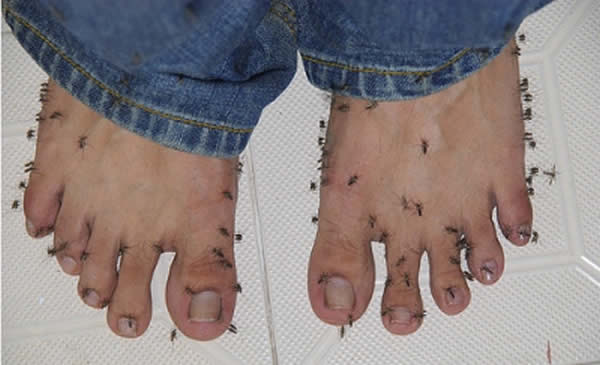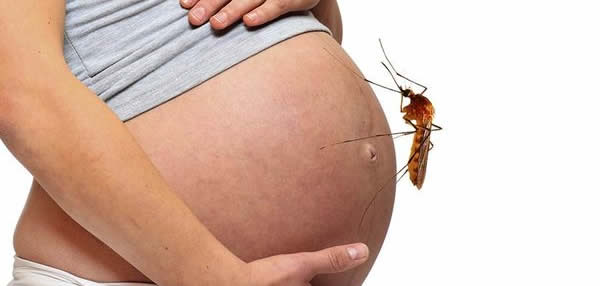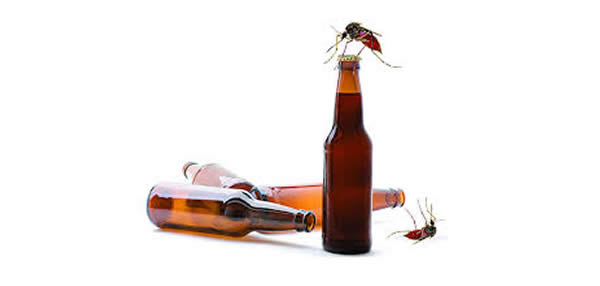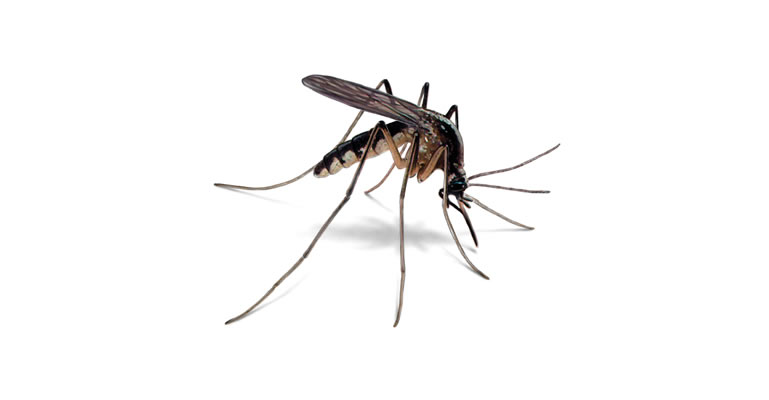ADVERTISEMENT
mosquito
Mosquito Species
There are more than 3,500 species of mosquitoes and about 175 of them are found in the United States. Some mosquitoes specialize on animals, and are no bother to us at all. Both female and male, mosquitoes feed mainly on fruit and plant nectar, but female mosquitoes need protein for their eggs, and must take a blood meal in order to reproduce. So when you get a mosquito bite, blame the female. When feeding to repletion, they imbibe anywhere from 0.001 to 0.01 milliliter of blood. Mosquitoes are considered the most dangerous creatures on the planet, responsible for more human deaths each year than sharks, snakes, bears and lions combined.
The different types of Mosquito Species. Mosquitoes exist across the world, with the exception of Antarctica. There are hundreds of different species of mosquitoes, listed below are the major genera of mosquitoes found in the U.S.
Anopheles (feed readily on humans, responsible for Malaria), Coquillettidia (extremely aggressive and feeds primarily on large mammals), Culex (breed in freshwater, responsible for Encephalitis), Culiseta (feeds actively on birds), Mansonia (very aggressive, active at sunset), Ochlerotatus (found in temporary floodwater pools), Psorophora (extremely aggressive, found in floodwater and woodlands), Uranotaenia (commonly found in ground pools), Wyeomyia (not the commonest type). Scientists have discovered that mosquitoes that spread the deadly disease are attracted to people whose feet are heavily covered with certain kinds of bacteria. So keep your feet clean. The researchers have noticed that people with high concentrations of steroids or cholesterol on their skin surface or excess amounts of certain acids, such as uric acid, or emit large quantities of carbon dioxide, attract mosquitoes.
Mosquito Eggs and oviposition
Here is a Mosquito as we are looking at Eggs and oviposition.
The term 'oviposition' means the act of laying or depositing eggs. Most mosquitoes lay their eggs directly into water. Others lay their eggs near bodies of water, but not within them. Larvae and pupae usually cannot survive without water. Female mosquitoes can lay up to 300 eggs at a time. Usually, the eggs are deposited in clusters. Females will lay eggs up to three times before they die. Researchers at the University of Durham, England, and the Medical Research Council in Gambia, Africa, found that mosquitoes bite pregnant women twice as often as women who weren't pregnant, because they breathe heavily, exhaling 21 percent more air and Carbon Dioxide.
Mosquito Lifecycle
Here is a picture of a Mosquito as we are looking at its Life cycle.
The mosquito goes through four separate and distinct stages of its life cycle: Egg, Larva, Pupa, and Adult-- Egg to Larva 24 to 48 hours, Larva to Pupal 7 to 10 days, Pupal to Adult 2 to 7 days. The length of the mosquito life cycle varies between species and is dependent upon environmental conditions such as temperature and moisture, and it can range from 4 days to as long as a month. People drinking beer have been shown to be more attractive to mosquitoes, because it increases the ethanol in your sweat, and raise your body temperature. They can be trapped easily by placing cups filled with cheap beer or use active yeast with the sugar.
Mosquito Taxonomy and evolution
Here is a picture of a Mosquito as we look into its taxonomy and evolution.
Mosquito Taxonomy refers to the classification and naming of different species of mosquitoes in an ordered system that is intended to indicate their natural relationships, especially evolutionary relationships. Mosquitoes are members of the phylum Arthropoda (a Greek word for joint leg) and belong to the class of Insecta. The phylum Arthropoda is comprised of five classes, such as, Crustacea (Example: Crab), Arachnida (Example: Spider), Chilopoda (Example: Centipede), Diplopoda (Example: Millipedes) and Insecta or Hexopoda (Example: insects). Arthropods include creatures that live in water, on land and in the air. The class Insecta is divided into some 29 to 40 major orders. Most insects belong to the class of Class Insecta (about 773,000 species) and mosquitoes are an important member of this category and insects make up more than half of all living things in the world. The oldest evidence of mosquito with anatomy similar to modern species was found in 79-million-year-old Canadian amber from the Cretaceous (i.e., 145.5 and 65.5 million years ago).





 A $800,000 Home occupied by Deputy Rony Celestin confiscated
A $800,000 Home occupied by Deputy Rony Celestin confiscated  Lumane Casimir And Songs
Lumane Casimir And Songs  Should birthright citizenship be eliminated in the US?
Should birthright citizenship be eliminated in the US?  Philippe Vorbe entered world football Hall of Fame, CONCACAF
Philippe Vorbe entered world football Hall of Fame, CONCACAF  Rafael L. Trujillo welcoming Paul Magloire in Santo Domingo
Rafael L. Trujillo welcoming Paul Magloire in Santo Domingo  Haiti Street Food, manje kwit or Chin Janbe, for $1 or less
Haiti Street Food, manje kwit or Chin Janbe, for $1 or less  Pope Francis appointed Mgr. Launay Saturne Archbishop of...
Pope Francis appointed Mgr. Launay Saturne Archbishop of...  Former PNH Chief, Godson Orelus, arrested for illegal arm...
Former PNH Chief, Godson Orelus, arrested for illegal arm... 



